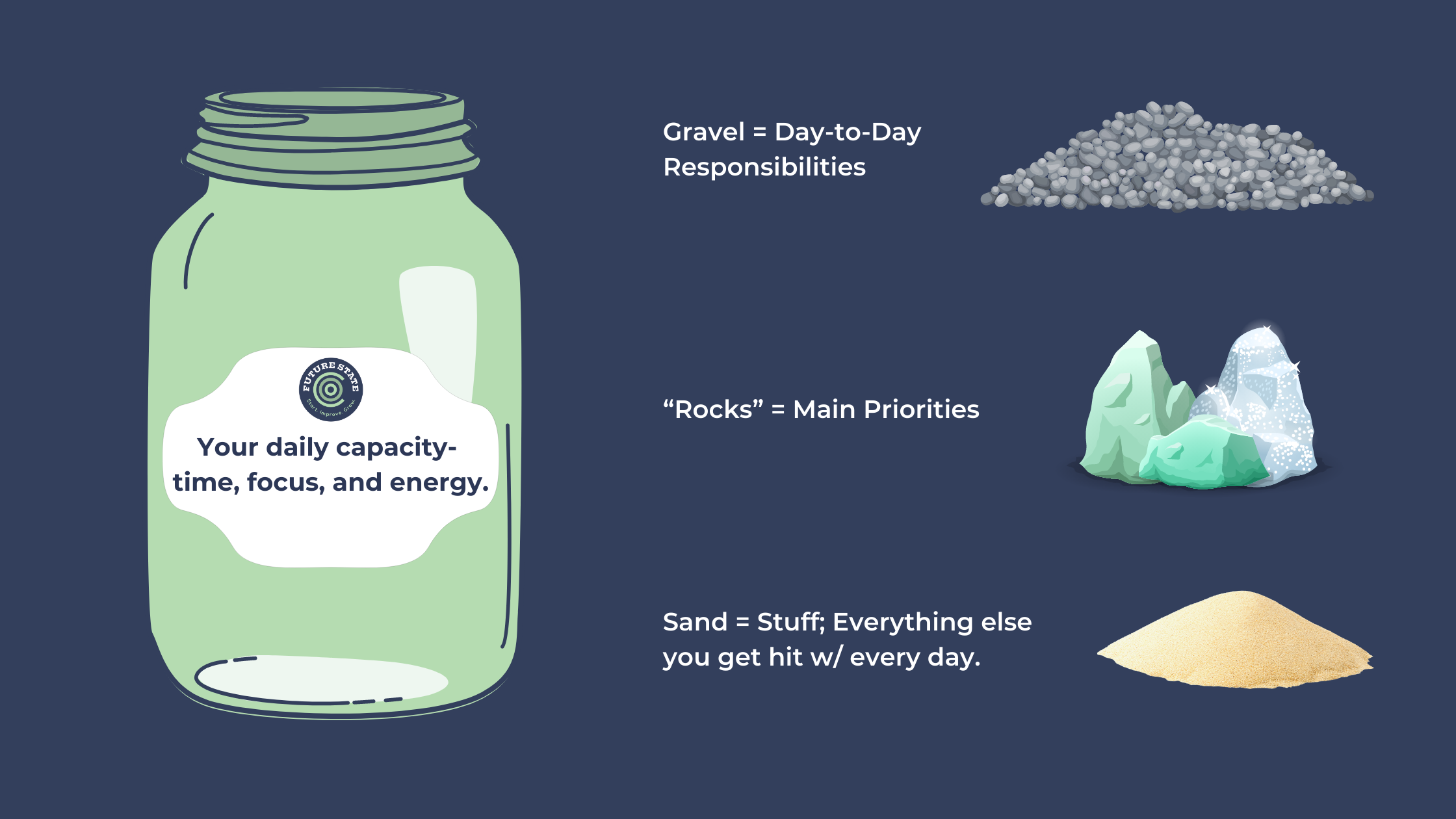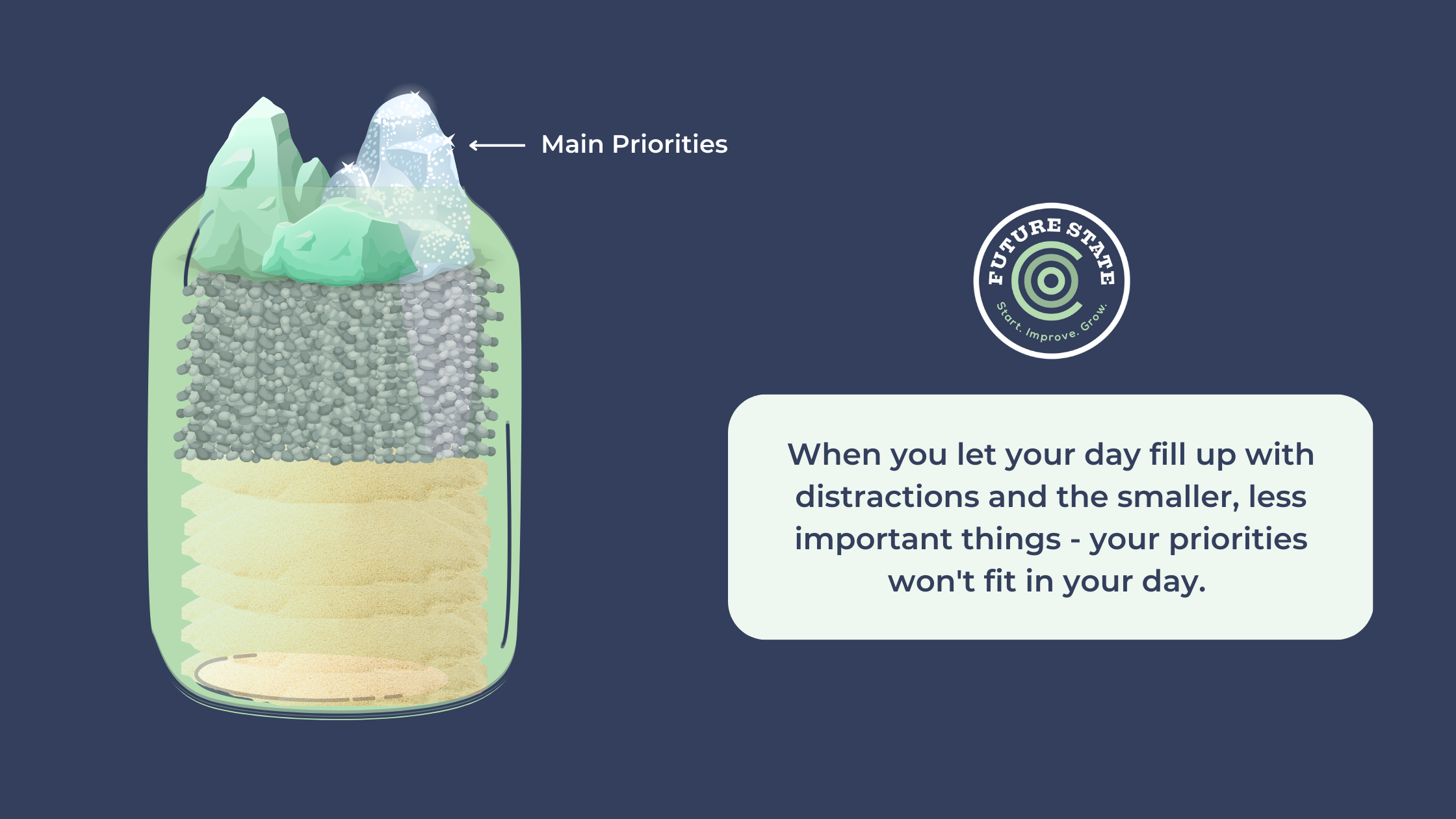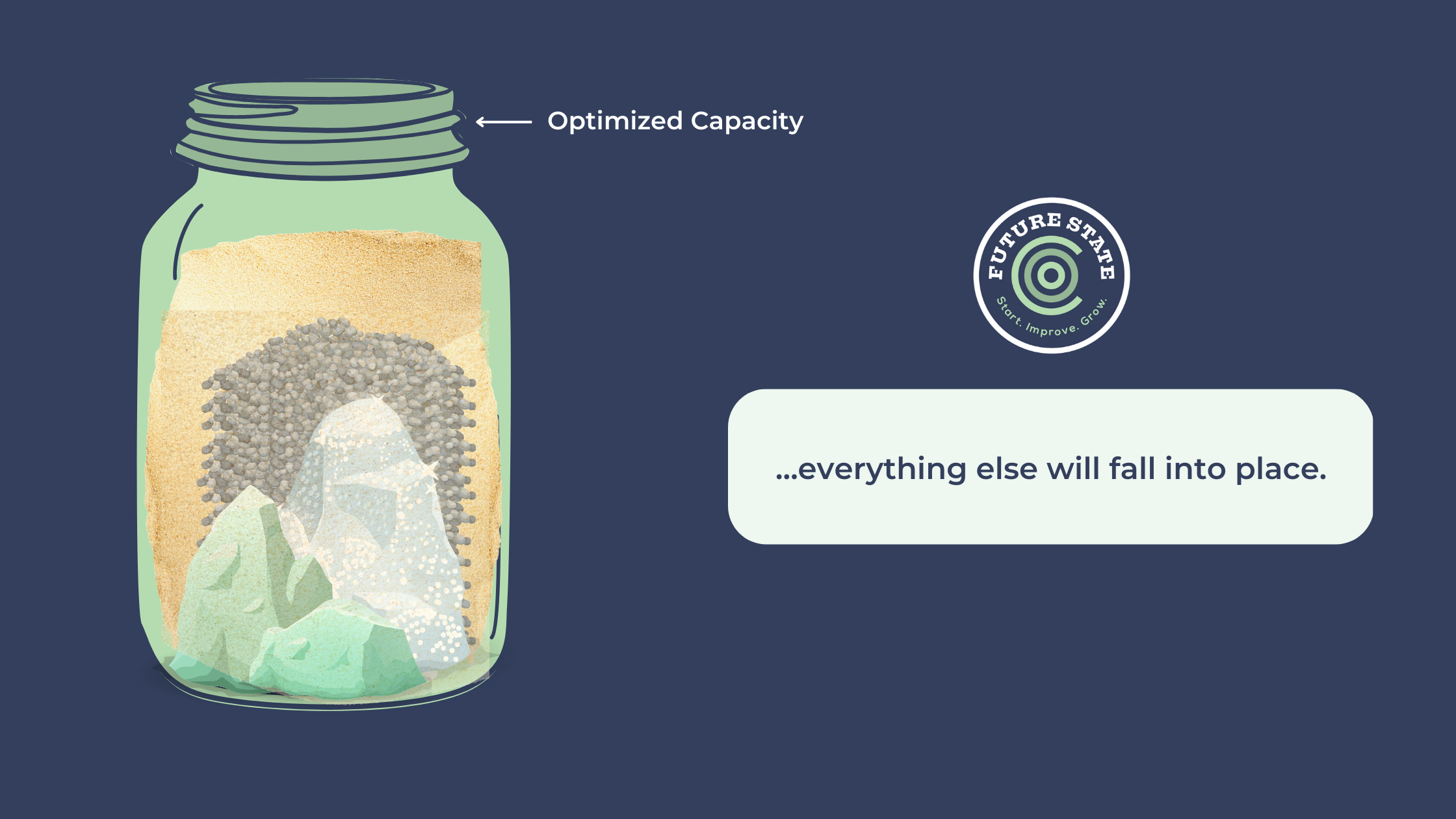How to Set Goals and Stay Agile in Your Business
It’s been nearly 30 years since Jim Collins introduced us to BHAGs—Big Hairy Audacious Goals—in Built to Last: Successful Habits of Visionary Companies, but the concept still resonates with many leaders and entrepreneurs. BHAGs are compelling, inspiring, and moving. They propel us into action. They rally our teams around a shared purpose. They get us out of bed in the morning.
And they are another critical part of your organizational Drishti.
BHAGs are not short-term. They inform your short-term goals, but BHAGs themselves are long-term, future-state-oriented targets. People have different understandings of “long-term,” from one to three, five, or even ten years. It can feel challenging to look too far ahead, especially when your business is in urgent, day-to-day survival mode. If that’s the case, it’s okay only to go out a year or two when imagining your future state and crafting your BHAGs. But as you gain more confidence and practice with BHAGs, consider looking further into the future. Push yourself to imagine your business in 10 years and declare a big and audacious vision for that business rather than the one sitting in front of you right now.
The Three Phases of Goal Setting
BHAGs aren’t just a feel-good exercise. BHAGs go into the future, so you know where to focus your efforts now. Once you know where you’re going in the long-term, you can work backwards to identify the annual goals, 90-day objectives, and 7-14 day tasks that will get you there. Effective goal setting happens in 3 phases:
Long-term: This phase includes your big-picture BHAGs and annual goals.
Short-term: In this phase, you’ll set your focused 90-day objectives, which should be strategies to move you toward your long-term goals.
Immediate: These are the specific tasks you’ll complete in the next 1-2 weeks (called a “sprint”) to accomplish your objectives.
Here’s how the 3 phases might look in practice:
Long-term: Annual Goal
$1M in sales
Short-term: Q1 90-day Objective
Develop and implement a sales strategy
Hire a business development rep
Immediate: 7-14 day Sprint Tasks
Research target market
Storyboard campaign flow
Each phase is an essential part of achieving your BHAGs and realizing your desired future state. You must know where you’re headed in the long run and then design the right short-term objectives and immediate tasks to get there.
Using Big Rocks to Set 90-day Objectives
When setting your 90-day objectives, it’s helpful to utilize Stephen Covey’s “Big Rocks” method for prioritizing your workload and sharpening your focus. In a nutshell, the theory works like this: imagine you have a pile of big rocks, a pile of gravel, and a pile of sand. Each pile represents a part of your life:
Big Rocks: Your most important priorities
Gravel: Day-to-day responsibilities
Sand: All the other “stuff” you get hit with every day
Now imagine you have a big glass jar that represents your life. If you pour all the sand (“stuff”) and gravel (day-to-day responsibilities) in first, you’ll have a hard time fitting in all the big rocks (important priorities) on top. You’ll even have to leave some of those big rocks out altogether. However, if you start with the big rocks—your top, most important priorities—and then pour the gravel and sand on top, all those day-to-day responsibilities and minor tasks will flow around the big rocks, fitting in wherever they can. It’s the perfect metaphor for organizing your business in a way that allows you to shoot for your future business while managing your now business.
The Importance of Shared Language
The Big Rocks concept is just one of many ways you can approach goal-setting in your organization. Another popular system is OKR, which stands for Objectives & Key Results. The OKR framework includes three components:
Objectives: “Where am I going?”
Example: Be a top place to work in the U.S.
Key Results: “How do I know if I’m getting there?”
Example: Reach Top 10 in Fortune 100 top places to work
Initiatives: “What will I do to get there?”
Example: Hire a People & Culture Manager
Ultimately, it doesn’t matter which framework or terminology you use. Whether you subscribe to Big Rocks, OKRs, another framework, or a combination of many, the most important thing is that everyone in your organization uses and understands the same framework and the same language.
If one person is asking about the big rocks for the quarter, while another is saying, “I need to hit this OKR,” and another is talking about goals, it’s impossible to tell if everyone is on the same page. They might all be talking about the same thing with different names – or they might not. When this sort of disconnect happens, you significantly reduce the likelihood that you’ll achieve your goals (or rocks or OKRs). Make sure that your team is using the same terms to talk about the same things and that everyone understands what those terms mean.
An Agile Approach to Goal-Setting
Another key to leveraging short-term goals to achieve your long-term vision is staying agile. The Agile methodology is an approach to project management that is iterative, flexible, and adaptive. The most popular Agile framework—and the one I use in my work as a fractional COO—is called Scrum. Scrum emphasizes teamwork, accountability, and iterative progress toward a well-defined goal. Scrum works by delivering large projects in small chunks—bite-sized increments that a cross-functional team can begin and complete in one, short time-boxed iteration. As each product increment is completed, teams review the functionality and then decide what to create next based on what they learned and the feedback they received during the review.
This iterative and incremental approach is the same mindset you want to bring to your goal-setting process. The primary reason for following an agile methodology like Scrum is the ability to be flexible and constantly re-prioritize your efforts and resources when new information, obstacles, and circumstances present themselves. As you move toward your BHAGs, your business will be actively changing in the present (that’s actually the point of your short-term strategies and tasks!), and you must adjust your next set of goals and objectives, as well as your systems and strategies, accordingly.
In other words, goal-setting is not a “set it and forget it” activity. At the end of each phase (annual goal, 90-day objective, or 7-14 day sprint), you must pause and reflect on the success of that phase and decide what needs to change during the next phase so that you are always putting your time and energy where it will best serve your mission.
It’s Time to Crush Your Goals
Now that you’ve declared your BHAGs and worked through the three phases of goal-setting, it’s time to start hustling and implementing your strategies. With an agile mindset and a clear understanding of your goals across the organization, your future state is absolutely within reach.





